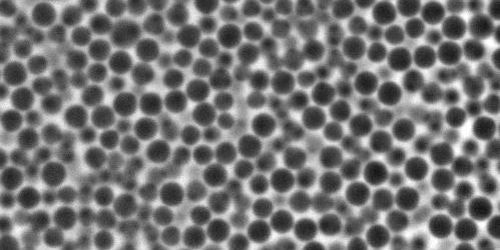Unjammed Emulsions Collapse to Liquids
A dollop of mayonnaise holds its shape because a network of repulsive forces between droplets stops the droplets from sliding past one another. Such “jammed solids” resist deformation as long as the droplets remain confined: when they are pushed too far or the pressure is released, contacts between droplets fail, and the solid flows. Just how strong the confining pressure must be to hold the solid together is an open question. Now, Rodrigo Guerra at Harvard University shows that this solid-liquid transition happens spontaneously when the pressure drops just enough to allow random thermal motion to disrupt the contact network.
Guerra sealed a liquid-liquid emulsion in a glass tube and allowed it to settle for several months. At various points throughout the column, he measured the emulsion’s density and its shear and bulk moduli. He obtained the density and the bulk modulus using magnetic resonance imaging, while he derived the shear modulus by measuring the displacements of thermally agitated droplets. These displacements were largest where the emulsion was soft.
Though the emulsion’s density increased smoothly from top to bottom, the bulk and shear moduli measurements indicated a sharp separation between liquid-like behavior at the tube’s upper end and solid-like behavior a few centimeters below. Guerra showed that the height of the transition corresponded to the critical confining pressure below which the solid could not resist random thermal agitation. He proposes that at the point of failure, thermal forces are comparable to the external stress that would be necessary to induce the same transition in the absence of thermal motion. This relationship between thermal and external forces could explain thermally activated yielding in other amorphous solids.
This research is published in Physical Review Letters.
–Rachel Berkowitz
Rachel Berkowitz is a Corresponding Editor for Physics based in Seattle, Washington, and Vancouver, Canada.




